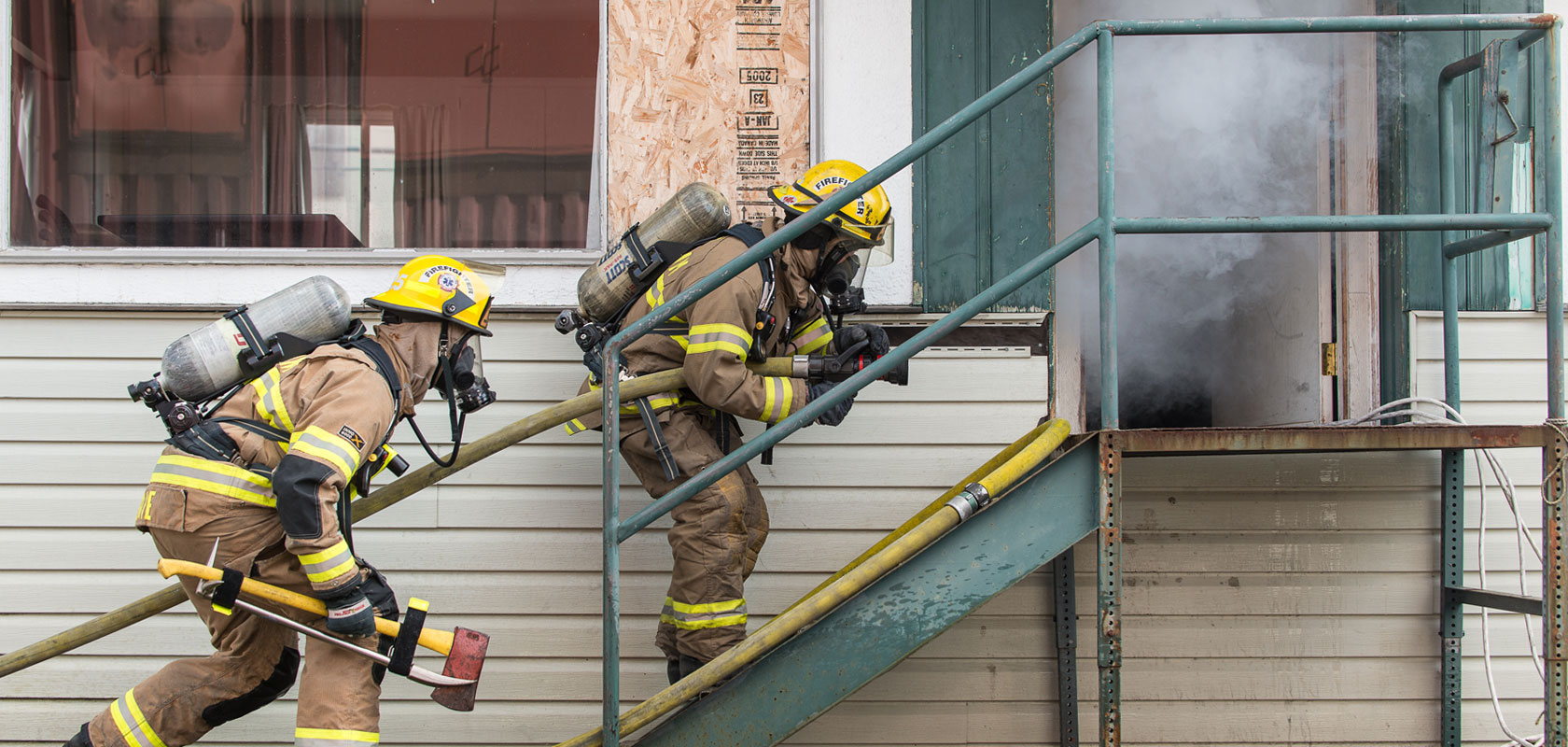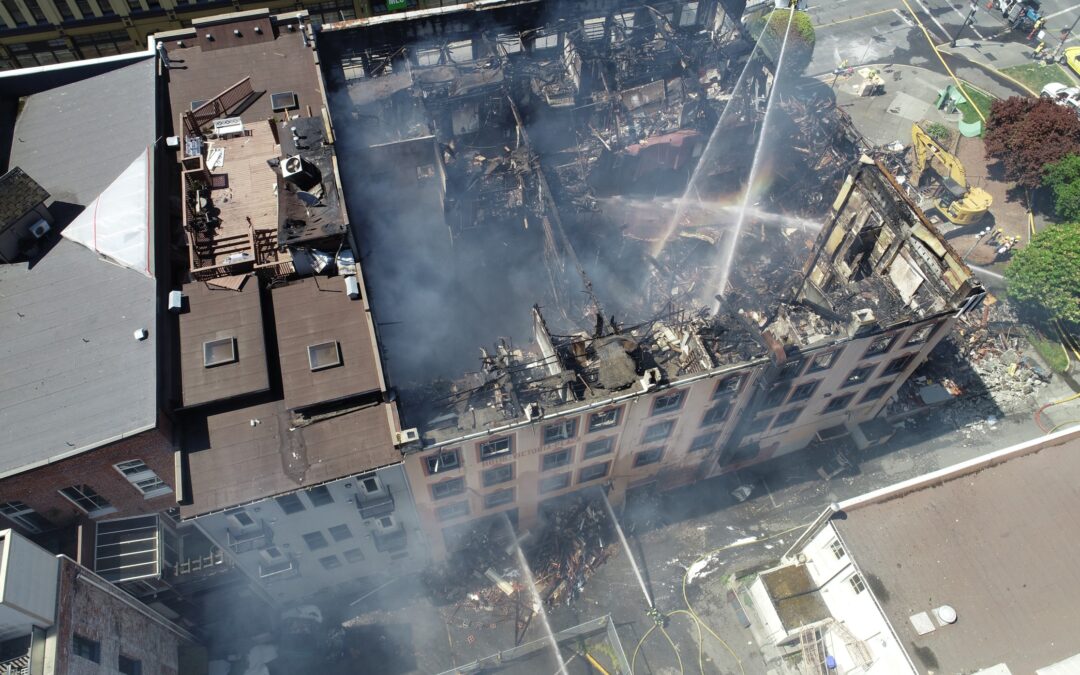By Scott Simmie
There’s no question that drones have become an essential part of the toolkit for First Responders.
Drones have proven themselves in Search and Rescue operations (including at night), for Situational Awareness in firefighting and disaster response, and as important tools in accident documentation that can allow police to more rapidly clear the scene and get traffic moving quickly again.
Now, the city of Port Coquitlam’s Fire and Emergency Services department has upped its capabilities thanks to two new drones and training – the result of a $30,000 grant from the Union of British Columbia Municipalities (UBCM). The money was earmarked as “Community Emergency Preparedness Funding.”
Below: An image from Port Coquitlam’s Fire and Emergency Services web page

EYES IN THE SKY
Drones have proven particularly useful tools to firefighters. They not only provide the Big Picture from above, but drones with thermal sensors can see beyond the visible flames – identifying other hotspots not visible to the naked eye. A section of roof that might appear fine could, in fact, be close to combustion.
On May 6, 2019, drones played a huge role at one of the worst fires in the City of Victoria’s history. What would come to be known as the Pandora Street Fire would ravage an historical buiding and take a week to fully extinguish. On the morning it broke out, there was so much roiling brown smoke that firefighters couldn’t even see where the flames were. They immediately put an InDro drone, equipped with thermal sensors, in the air.
“If you’ve ever been to one of these big fires, the smoke is thick and completely impenetrable,” explained InDro Robotics CEO Philip Reece in this story.
“You’re pointing the hose at where you think the fire is. Now you switch to thermal and it basically cuts the smoke – the smoke disappears. Now you see the heat coming up off the fire. You can actually follow it down through the different radiometric temperature colours to where the real core of the fire is.”
The image below was taken at the Pandora Street Fire and is courtesy the City of Victoria’s Fire Department. You can see, thanks to thermal, where the hottest spots are. It’s a clear example of how important an airborne thermal sensor is:

DRONES AND MORE
The drones, purchased via InDro Robotics, are two DJI Mavic 3 Enterprise Thermal units. The camera provides up to a 56x combined optical/digital zoom, and the thermal sensor has 640 x 512 resolution. With flight times of up to 45 minutes, the pair of drones can be easily rotated for continuous situational awareness. The controller allows to displaying both visual and thermal imagery side-by-side.
“This is a great example of our city using creative technology tools to better serve and protect our community, residents and keeping our firefighters safe,” said Mayor Brad West in this news release.
“Providing immediate access to real-time video footage, helps our firefighters make better on-scene decisions. We are grateful to the Union of British Columbia Municipalities (UBCM) for providing us with this grant that will positively impact our community.”
TRAINING
The grant also provides for training of those who will operate the drones – as well as to develop planning exercise scenarios for the City’s Emergency Operations Centre. Five Fire Department pilots currently hold their Transport Canada Advanced RPAS Certificates, and additional training with InDro Robotics will take place to in order to fully exploit the capabilities of the thermal drones and interpret the data.
The news release states that drones will be able to provide real-time information via live-streaming to the City’s Emergency Operations Center during incidents:
“A review of the current EOC practices, used to obtain information, suggests that more timely and reliable information can be obtained through the use of technology, such as drones. Using a drone to survey the site of an incident can reduce the risk of injury to first responders as well as give crucial information to the incident commander for planning response activities which can be livestreamed to the EOC.”
MULTIPLE USE-CASES
It goes on to outline some of the many benefits of drone use, including:
- “Provides fast and efficient reconnaissance of the incident from a safe distance prior to sending first responders in to perform search and rescue operations;
- “The use of drone mounted thermal imaging cameras assist first responders in identifying heat signatures of trapped or injured civilians who may not be easily seen or heard;
- “Support City staff in pre-disaster planning efforts, e.g. geographic surveys and inspections of bridges, dams, and diking systems; and
- “Provides staff with updated, accurate, high definition images for the City’s data collection.”
Councillor Steve Darling, the City Council’s designate for community safety matters, is quoted outlining why these drones are an important addition:
“The drone(s) will be used to support fire ground operations, relaying important information regarding fire growth and heat. This will also increase firefighter safety, allowing the department to keep an eye on firefighters working in hazardous areas.”
Below: A DJI video outlining the features of its Mavic 3 Enterprise drones
INDRO’S TAKE
It’s been less than a decade since DJI released the original Phantom, which required a separate GoPro and was not capable of video streaming unless you really wanted to buy hobby parts and hack the camera to transmit. Drones were anomalies then, largely purchased by hobbyists.
But it wasn’t long before First Responders started seeing the potential. Some early adopters embraced the emerging technology, and it wasn’t long before word started to spread. It’s now routine, at pretty much any drone or First Responders convention, for presentations to be made showing real-world examples of how useful – critical, even – drones have become.
“The growth of drone technology has truly been exponential – and so have the use-cases,” says InDro Robotics CEO Philip Reece.
“We’ve long been involved with drone training with Port Coquitlam Fire, and applaud the Union of British Columbia Municipalities for this forward-thinking grant. We look forward to hearing about the many ways these drones benefit Port Coquitlam Fire and the City’s Emergency Operations Centre.”
InDro has, for many years, trained First Responders and supplied specialized drones for their work. If your local First Responders would like to learn more about the capabilities of InDro drones or ground robots – including training at the forthcoming Area X.O advanced drone and ground robot facility in Ottawa – feel free to contact us here.

